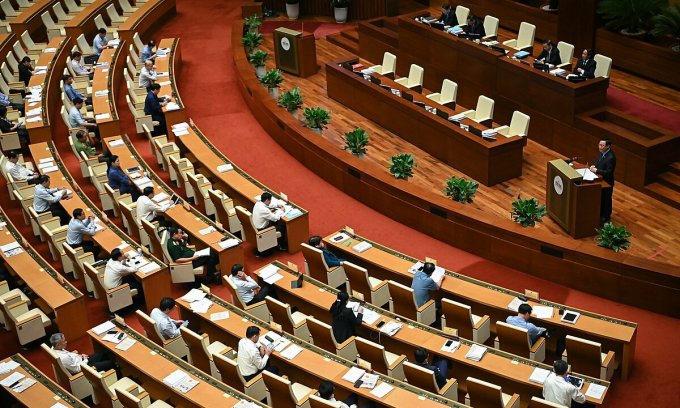Settlement of commercial disputes by courts in Vietnam

Commercial activities are economic activities for profit, so disputes cannot be avoided. There are many methods to resolve commercial disputes, of course the most popular is still the Court. So about the matter “Settlement of commercial disputes by courts in Vietnam” Let’s find out with LSX in the article below.
Legal grounds
- Commercial Law 2005
- Civil Procedure Code 2015
What is a commercial dispute?
Commercial disputes are a common and frequent phenomenon in the operation of the market economy. Due to its frequent nature as well as its consequences for the parties to the dispute in particular and for the economy in general, Vietnamese law soon had certain concerns about this activity as well as The methods to solve it are expressed through specific provisions in many legal documents.
The 2005 Commercial Law passed by the National Assembly on June 14, 2005 introduced a relatively simple concept of commercial activities. However, this concept also contains and describes the connotation of commercial activities. According to the provisions of Clause 1, Article 3 of the 2005 Commercial Law, commercial activities are activities for profit-making purposes, including purchase and sale of goods, provision of services, investment, trade promotion and other activities. for other profitable purposes.
According to this concept, the concept of commercial activities is extended to include all activities with profit-making purposes. This approach of the Commercial Law shows that the concept of commercial activities has shown similarities with the business concept in the Enterprise Law in previous years as well as the Enterprise Law 2020. Business is a business. continuously perform one, several or all stages of the process from investment, production to consumption of products or provision of services in the market for the purpose of seeking profit. (Clause 21, Article 4 of the Enterprise Law 2020).
The Civil Procedure Code 2015 also lists business and commercial disputes that fall under the jurisdiction of the court (Article 30 of the 2015 Civil Procedure Code). The Civil Procedure Code 2015 does not use the term “commercial disputes” independently, but generally uses the term “business and commercial disputes”, but the content of disputes about commercial business is regulated by law. The provisions of Article 30 of the Civil Procedure Code are actually commercial disputes according to the approach of the 2005 Commercial Law. That shows, although there are differences in expression and language used. but in general, the concept of commercial activities and commercial disputes is reflected in relatively consistent provisions in legal documents.
From the above approach, it can be understood:
“Commercial disputes are conflicts (disagreements or conflicts) over rights and obligations between parties in the course of performing commercial activities.”
Features of commercial dispute resolution by court
Advantages of dispute resolution by court
If the settlement of disputes by arbitration is characterized by respecting the right to agree or the will of the parties to make an award, the basic feature of the dispute settlement procedure by the court is through the operation of the court. action of the judiciary and in the name of state power to issue judgments that oblige the parties to enforce them, even by coercive force. As a result, the resolution of commercial disputes through the courts also directly contributes to raising awareness and respect for the law for business entities.
– The settlement can go through many levels of trial, so the principle of multi-level trial ensures that the court’s decision is accurate, fair, objective and in compliance with the law.
– The cost of resolving economic disputes in court in accordance with the law is much lower than resorting to commercial or international arbitration organizations.
Limitations of dispute resolution by Court
Dispute resolution procedures through award courts are longer than those of arbitration panel dispute resolution. Moreover, the principle of public review in court is not suitable with the nature of business activities and the psychology of the business world, (which can reduce the reputation of the parties above the merchant, reveal the secrets of the business community). business…), in addition, court judgments that have not been immediately enforced are often appealed. The proceedings may be delayed and prolonged; may have to go through several levels of trial; affect the production and business process
+ The procedure in court is not flexible because it has been prescribed by law before;
For commercial disputes involving foreign elements:
Court decisions are often difficult to gain international recognition. Court decisions are recognized in another country often through bilateral agreements or on very strict rules.
+ Although national judges may be objective; they are still forced to use the language and rules of procedure of their own country and are often of the same nationality as one of the parties.
Settlement of commercial disputes by courts in Vietnam
Step 1: File a lawsuit and accept the case
Prepare petition documents:
First of all, it is necessary to make a lawsuit petition, the petition must contain all relevant information of the plaintiff, defendant, related people, evidence, and other specific information… (Refer to Clause 4, Article 198, Civil Code 2015 )
File to court:
– After completing the lawsuit dossier, proceed to send the petition to the Court. (To apply by yourself or through a legal representative)
– The form of submitting an application to the Court can be done in many different forms: Direct submission, postal mail, online submission via the Court’s web portal (if any).
Note: Consider the jurisdiction of the Court to apply accordingly, otherwise the file will be returned
Step 2: Carrying out the procedure to accept the case
Handling petitions:
Within 03 working days after receiving the lawsuit petition, the Chief Justice of the Court shall assign a judge to consider the petition.
+ If the lawsuit file lacks information, the court shall request the involved parties to add additional information.
+ If the lawsuit is not within the jurisdiction of the Court, return the file, or transfer the file to the competent court, and at the same time notify the petitioner.
Carrying out the procedure for handling the case
+ If the dossier is valid, competent, and has enough information, the procedures for accepting the case can be carried out (Common procedures can be carried out or shortened procedures – Conditions and procedures for carrying out abridged procedures can be carried out). comply with Clause 1, Article 317 – Civil Code 2015)
Advance court fees to the Court
– After checking the validity and sufficient information and falling within its jurisdiction, the court shall notify the plaintiff to pay the court fee advance.
– Within 07 days from the date of receiving the court’s notice, the plaintiff must pay the court fee advance to the court.
– How much is the advance court fee to pay? The judge will estimate the amount of this advance and notify the petitioner. (When paying the court fee advance, all must have a receipt)
– In case the plaintiff is exempted from legal fees, the judge must accept the case when receiving a valid and complete lawsuit petition.
Notice of acceptance of the case
Within 03 working days from the date of accepting the case, the judge must notify all relevant parties and at the same time notify the same-level procuracies of the court’s acceptance of the case.
These notices will be made in writing
Step 3: Prepare for trial
Assign a judge to handle the case
Within 3 working days after accepting the case, the chief justice of the court shall decide to assign a judge to handle the case. (The chief justice assigns the judge to ensure the principle of impartiality, objectivity and randomness)
For complicated cases where the settlement may take a long time, the Chief Justice of the Court shall assign an alternate judge to ensure the timely trial as prescribed by law.
– During the settlement of the case, if the assigned judge cannot continue to perform the task, the chief justice of the court shall assign another judge to continue the task;
If there is no alternate judge, the case must be retried from the beginning and the court must notify the involved parties and the same-level procuracy.
Make a case file
The judge prepares the case file, conducts verification, collects evidence, and clarifies the objective details of the case.
– The judge holds a meeting to check the handover, access, disclosure of evidence and conciliation (except for cases prohibited by law not to be conciliated).
Conduct mediation
+ If the conciliation is successful (within 7 days without anyone objecting), the judge will issue a decision to recognize the conciliation and send the decision to the involved parties and the same-level procuracy.
+ If the conciliation fails, the judge makes an unsuccessful record and concurrently decides to bring the case to trial.
Step 4: First instance trial
The trial of the first instance is the first trial. In this time, there must be all the involved parties at the Court, if one of the parties is missing, the legal representative… of one of the parties, the case will be adjourned (unless that person has an application in his/her absence).
– If it is postponed, it will be summoned for the second time, if it is still absent for the second time without an application for absence, or not because of force majeure, it will be considered as giving up the lawsuit.
– In case the case is still conducted in the form of trial in absentia, at this time, that party will not have the right to object and will not be able to protect its legitimate interests.
Step 5: Appellate trial
– In case the judgment or decision of the first-instance court has not yet taken legal effect but is appealed or protested against, the appellate court will review this judgment or decision.
– The involved parties have the right to appeal against the first-instance judgment within 15 days from the date of judgment.
– The time limit for appeal against the first-instance court of the same-level procuracies is 15 days, for the immediate superior procuracies is 1 month from the date of judgment pronouncement.
The appellate trial panel has the right to uphold, correct, cancel all or part of the first-instance judgment, and then transfer the file to the first-instance court for re-handling of the case according to first-instance procedures or to suspend or temporarily suspend the settlement of the case.
– The appellate judgment takes effect from the date of its pronouncement
Step 6: Review the effective judgment
Legally effective court judgments or decisions may be protested against according to cassation or reopening procedures.
A legally effective court judgment or decision may be protested against according to cassation procedures in the following cases:
The conclusion in the court’s judgment or decision is not consistent with the objective circumstances of the case, causing damage to the lawful rights and interests of the involved parties.
+ There is a serious violation of procedural procedures that makes the involved parties unable to perform their procedural rights and obligations, resulting in their legitimate rights and interests not being guaranteed.
+ There is a mistake in the application of the law leading to the issuance of incorrect judgments or decisions, leading to their legitimate rights and interests not being guaranteed, causing damage to third parties, public interests and interests of the State.
Step 7: Execution of the Court’s judgment or decision
This is the final step of commercial dispute resolution by Court. At this step, the parties have the right to reach an agreement on the execution of the judgment (the agreement must not be contrary to law and social ethics).
– When the parties agree on the manner and form of judgment enforcement, the results of this agreement will be recognized.
– If the involved parties fail to comply with the agreement, they have the right to request the judgment enforcement agency to apply the judgment enforcement measure according to the previous judgment or decision.
– If the involved parties have conditions to execute the judgment but do not voluntarily, they will be executed in the form of coercion.
Within 5 years from the date the judgment or decision takes legal effect, the involved parties have the right to request the civil judgment enforcement agency to issue the judgment enforcement decision.
After 5 days from the date of request, the judgment enforcement agency shall issue a judgment enforcement decision.
Services of LSX
Prestigious professional services: Firstly, the team of consultants and consultants for many years in the field of civil status, and customer support.
On-time: Certainly, with the motto “Get your lawyer right at your fingertips”, we ensure the service always performs on time. The rights and interests of customers always come first.
Cost: Besides, LSX’s service costs are highly competitive; depending on the nature of the particular case. So, we want our guests to have the best possible service experience. Therefore, costs which guaranteed to be the most suitable and economical for customers.
Confidentiality of client information: Finally, all brand information of client LSX will be 100% confidential.
Please contact us immediately if you have any questions about “Settlement of commercial disputes by courts in Vietnam”
Contact LSX
Finally, hope this article is useful for you to answer the question about “Settlement of commercial disputes by courts in Vietnam” If you need any further information, please contact LSX Law firm: at +84846175333 or Email: [email protected]
Please see more
- Causes of business and commercial disputes in Vietnam
- Priority points of commercial dispute resolution in Vietnam
- Regulations on property auction organizations in Vietnam
Frequently asked questions
Commercial disputes require a satisfactory settlement in order to protect the interests of the parties, educate citizens’ sense of respect for the law, contribute to preventing law violations in commercial activities, and ensure public order. law and social discipline. In addition to the Court, currently commercial disputes are resolved by the following methods: negotiation, conciliation, and commercial arbitration. Each method is different in terms of legal nature, content of the procedure, and the order in which to proceed.
– Based on the scope of territory: Domestic commercial disputes and international commercial disputes.
– Based on the number of disputing parties: Bilateral commercial disputes and multi-party commercial disputes.
– Based on the field of dispute: Disputes related to contracts, disputes over intellectual property, investment, etc.
– Based on the implementation process: Disputes during the negotiation, drafting and signing of the contract, and disputes during the performance of the contract.
– Based on the time of dispute arising: Current and future commercial disputes.
According to Point b, Clause 1, Article 203 of the 2015 Civil Procedure Code, the time limit for trial preparation for commercial disputes is 2 months. In case of force majeure or for objective reasons, the above time limit should be extended for no more than 1 month.
And within 1 month from the date of the decision to bring the case to trial, the court must open a court session; if there is a legitimate reason, this time limit is 02 months (Clause 4, Article 203).
Conclusion: So the above is Settlement of commercial disputes by courts in Vietnam. Hopefully with this article can help you in life, please always follow and read our good articles on the website: lsxlawfirm.com




